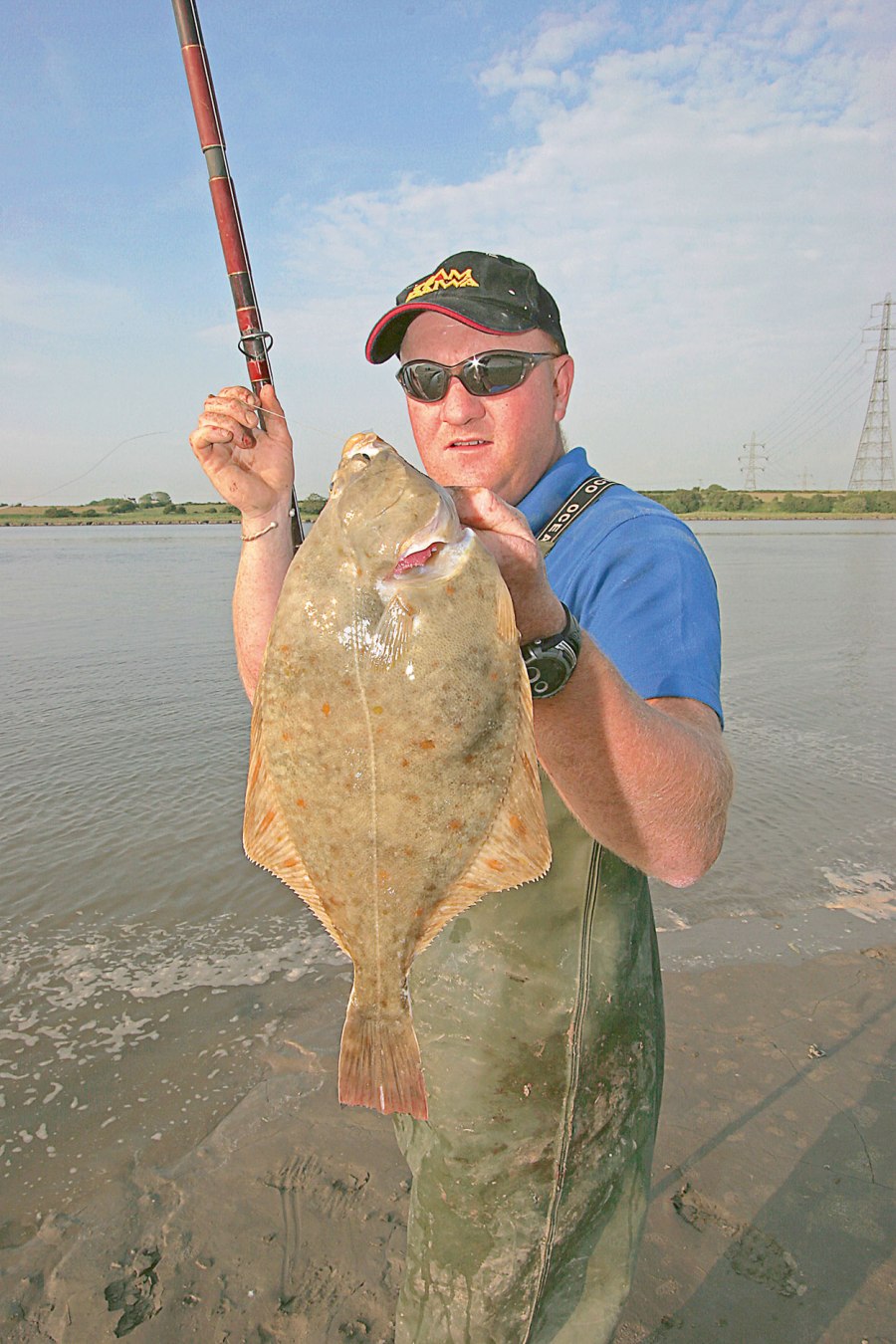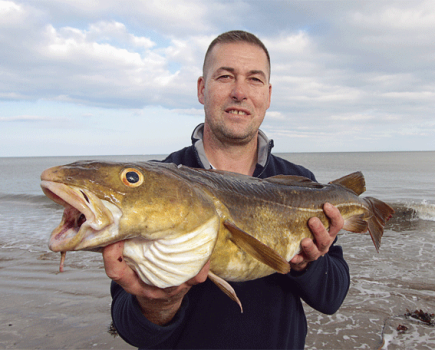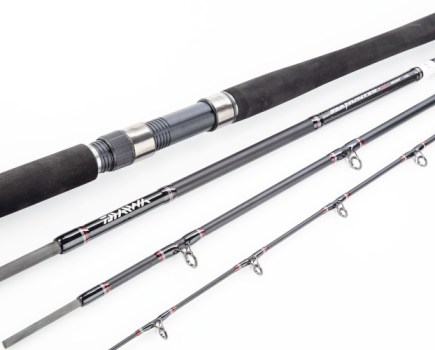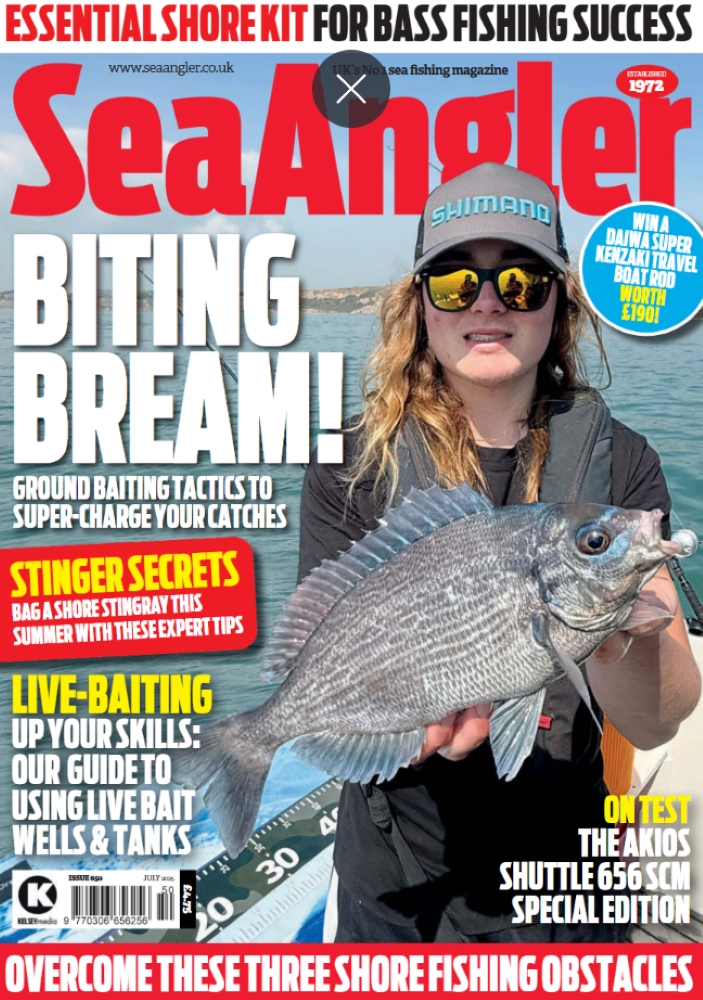Flounders are yet another flatfish that have their eyes on the right side. It is a very widely distributed flatfish found all around the coast of Britain and Ireland.
It lives from the shoreline down to depths around 50m deep, favouring muddy bottoms but will also live over sandy bottoms.
Flounders are amazingly tolerant of variations in the salt content of water. They can be found living in the sea, they can be found living in estuaries where slat water meets fresh, and they can even be found (and caught) in the freshwater of rivers well away from the sea shore.
As far as anglers are concerned the flounder is primarily a spring, summer and autumn species as it is at these times of the year when flounders live within casting range. In the depths of winter they migrate into the warmer and deeper water well away from the shoreline.
IDENTIFICATION
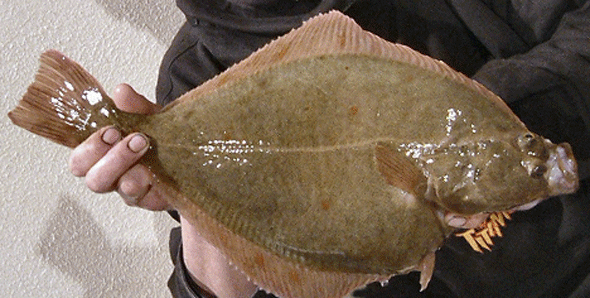
The flounder is a typical flatfish. It has flattened fins that wrap around the oval-shaped body.
Its eyes are positioned on one side of the head – the uppermost side. The eyes of a flounder are situated on the right side of the head (if you imagine the fish swimming upright).
But, identifying flounders can be quite difficult as some have been found with eyes directed towards the left. Plus, flounders have been known to interbreed (hybridise) with plaice, so coloured variations have been known to exist. And, there are also flounders out there which have undersides exactly the same colour as their backs – normally they have white undersides.
The tail of a flounder is quite square at the end, plus there are bony tubercles around both sides of the body, at the bases of both the elongated dorsal and anal fins.
FEEDING
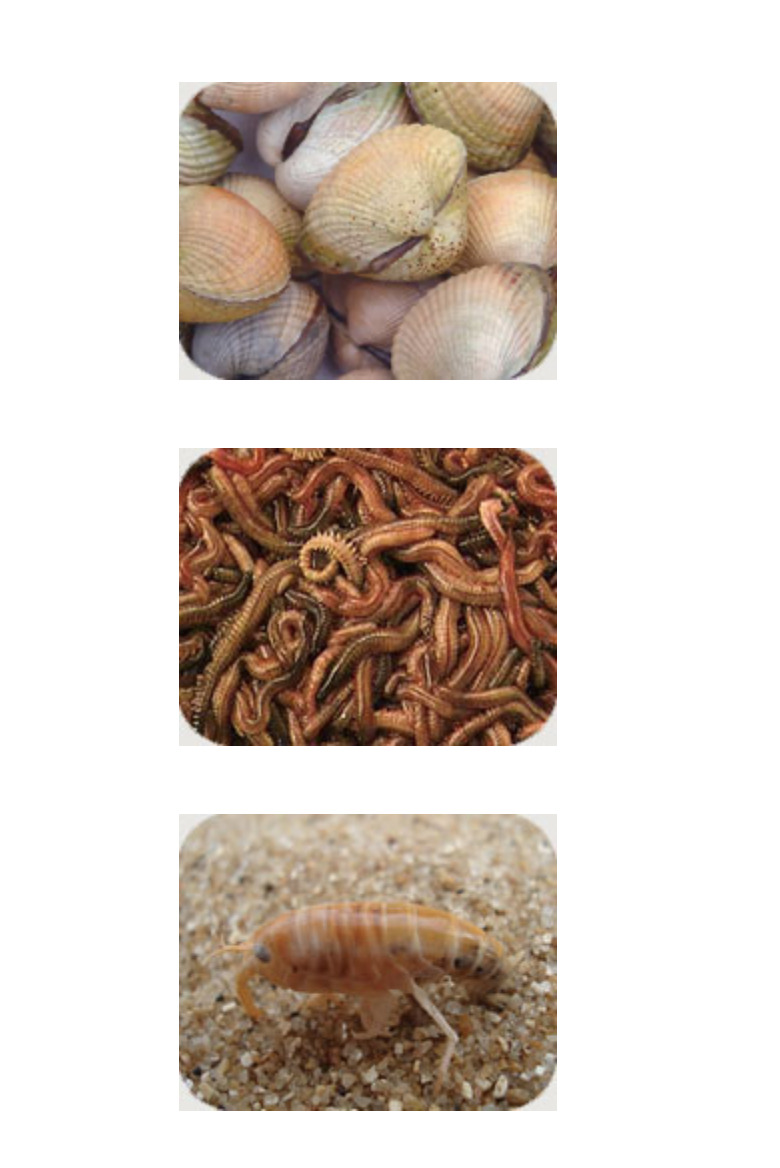
Flounders feed upon much smaller crustaceans and animals than the plaice simply because they do not posses the same shell-crushing strength within their pharangeal teeth.
They survive on cockles, sand hoppers, shrimps, worms and molluscs, and if you wish to try to catch a flounder or two you will be best using small baits such as worms or crab pieces.
They feed best at night where they move into the shallower water. During the daytime they often remain buried within the mud or sand.
BREEDING
During the springtime the adult flounder move into deeper water of between 25-40m around the British Isles to spawn. The females lay between 500,000 and two million eggs which float straight to the surface. Given good temperatures these eggs will hatch in less than two weeks.
The lifecycle of a flounder is very similar to that of a plaice in that the flounder fry drift with the current and plankton until they reach the shallower shoreline. By the time they reach 3cm they will have taken on the familiar flounder flatfish shape and the eye will have migrated over to the right side.
Once they have metamorphosed they sink to the bottom to begin their bottom-dwelling existence.

